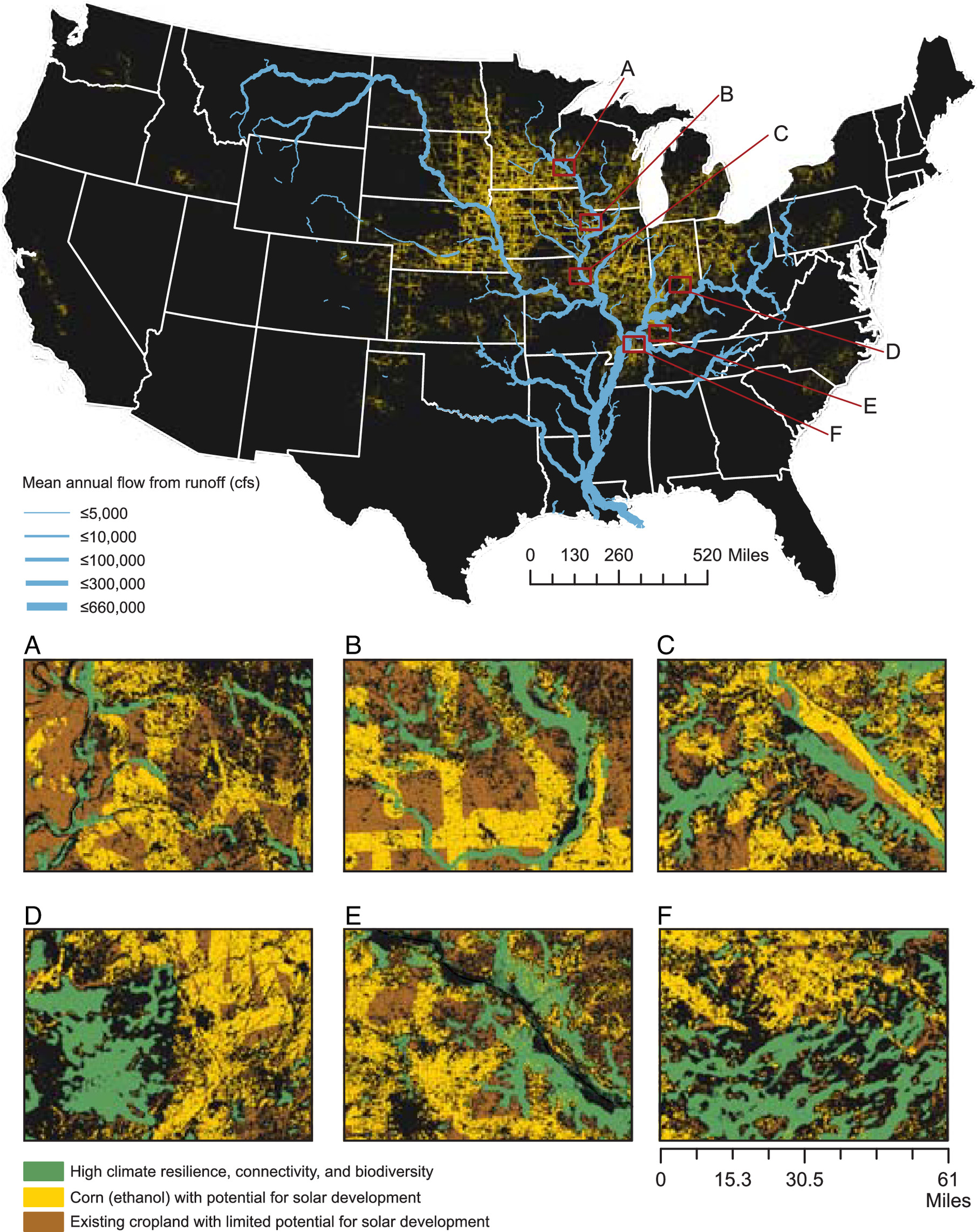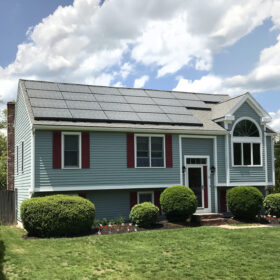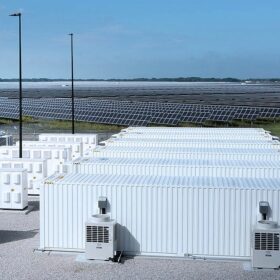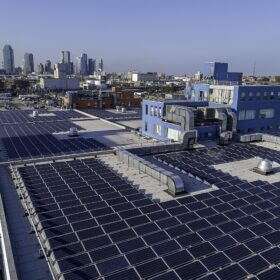In the United States, regulations require that gasoline contains about 10% ethanol, a biofuel made from corn. About 29.7 million acres of farmland are dedicated to corn growing for ethanol fuel in the U.S. Roughly 38% of U.S. corn harvested is used for ethanol fuel, rather than food.
A study from Department of Natural Resources and the Environment of Cornell University published in Proceedings of the National Academy of Sciences found that solar PV generates the same amount of energy as corn ethanol in just 3.2% of the land-use footprint. In other words, the energy generated by one hectare of utility-scale solar would require about 31 hectares of corn-ethanol to produce the same amount energy. Find the methodology here.
“Social opposition to solar development in croplands persists, and moratoriums on solar development are underpinned by the argument that prime agricultural land should be left to produce food,” said the Cornell study. “Meanwhile, approximately 12 million hectares of croplands (an area about the size of New York State), are cultivated for energy production in the form of corn ethanol.”

The study identified target locations where corn for ethanol could be strategically converted to solar PV within a “technically feasible proximity to electrical transmission (≤3.3 km or 2 miles).”
The research found that using just 3.2% of the land currently used for corn ethanol could increase the share of utility-scale solar energy in the U.S. from 3.9% to 13%.
The researchers noted that solar and ethanol are not a perfect one-to-one swap in end-use, as ethanol is primarily used as a gasoline additive while solar production is exported to the electricity grid. However, electricity demand from the grid is expected to grow 33% to 75% by 2050, based on Energy Information Administration data, and 33 million electric vehicles are expected to be on the road by 2030, according to the National Renewable Energy Laboratory.
The researchers suggested perennial vegetation could be planted beneath the solar arrays. The “ecovolatic” solar arrays could “filter excess nutrients transported from adjacent farm runoff, diversify and connect agricultural landscapes, and provide local wildlife habitat.”
Fertilizer runoff from ethanol corn farming causes water quality issues and ecological damage. The researchers targeted locations for conversion that were the highest contributors to nutrient runoff in the Mississippi River System. It found that solar coupled with perennial vegetation, could reduce nutrient runoff by as much as 85% in the river system by stabilizing soils, retaining sediments and filtering runoff. It estimated that about 391,000 hectares of converted ethanol fields could reduce nitrogen and phosphorus runoff by about 54.8 million kg and 26.3 million kg, respectively.

The 391,000 hectares would generate about 380,000 GWh of electricity annually while improving the quality of the Mississippi River System.
Moreover, the researchers found that if 46% of the land currently used to farm corn for ethanol was converted to solar, the projects would generate enough electricity for the United States to decarbonize its electricity system by its 2050 goal.
(Read more: “Agrivolatics for corn“)
This content is protected by copyright and may not be reused. If you want to cooperate with us and would like to reuse some of our content, please contact: editors@pv-magazine.com.









What? This article is so apples to oranges. Electrical energy is not directly comparable with liquid fuel energy.
I certainly agree that corn ethanol is a terrible lose (cost) – lose (environmental damage) – lose (alternative land use) proposition. But to make sense, your article must lead to one of these possible conclusions: 1. Stop using ethanol in gasoline. 2. Radically scale-up the ability to use electricity to create a liquid fuel that can play the part of ethanol in gasoline. 3. Only drive EVs. Feel free to pick one, and argument the point home.
I’d suggest a version of the “stop using ethanol in gasoline” option with an additional element: increase mandatory MPG so as to reduce the amount of gasoline used. Based on known and familiar technologies, you could raise mandatory MPG to an average of 50 for manufacturer fleets, based on internal combustion engine improvements, hybrid propulsion systems, and plug-in hybrid propulsion systems.
But the point is, this article, as it stands, doesn’t compute.